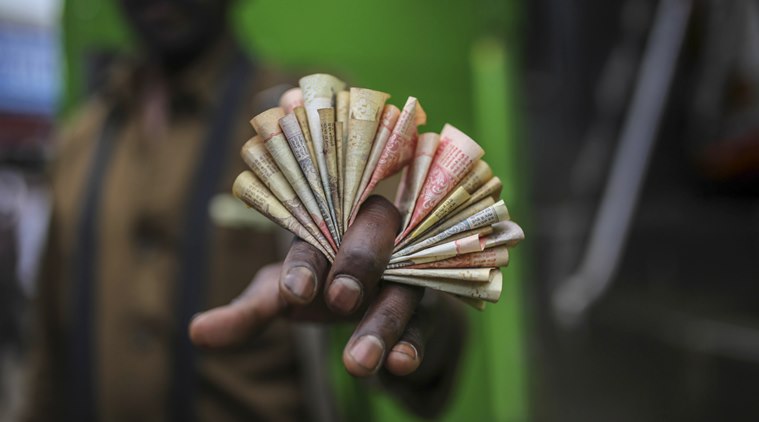Rupee plunges to a lifetime low of 69.10 against US dollar
According to analysts, capital outflows of around Rs 19,500 crore from the equity market and over Rs 40,000 crore from the debt market since April this year have put severe pressure on the rupee.
 The rupee later recovered partially to 68.91 at around 11 am against the US dollar on suspected Reserve Bank intervention. Photographer: Dhiraj Singh/Bloomberg
The rupee later recovered partially to 68.91 at around 11 am against the US dollar on suspected Reserve Bank intervention. Photographer: Dhiraj Singh/Bloomberg
The rupee collapsed to an all-time low of 69.10 against the US dollar on Thursday morning as rising crude oil prices triggered worries about the further rise in the current account deficit and inflation. Huge capital outflows of around Rs 60,000 crore from the capital market since April 1 this year also put pressure on the rupee.
The rupee later recovered partially to 68.91 at around 11 am against the US dollar on suspected Reserve Bank intervention.
The Indian currency has lost around eight per cent his year as foreign investors were pulling out funds from India and crude oil prices moved upwards. On Wednesday, the rupee slipped to 68.61, its weakest level in 19 months, against the dollar. “Rising crude prices are a drag on the Indian economy and fuel inflation concerns, as it’s a major driver of our current account deficit. India imports around 80 per cent of its crude oil requirements and higher crude oil prices risks widening India’s current account deficit, adding inflation risks,” said an analyst with Religare Broking.
Oil prices rose to their highest level since November 2014 on Wednesday after a bigger-than-expected drop in US crude stockpiles added to a rally fueled by a major Canadian supply outage, concerns about Libya’s exports and stepped-up efforts by the Trump administration to disrupt Iran’s petroleum exports.
Analysts said persistent weakness in the Chinese yuan also dragged down emerging market currencies, including the Indian rupee, amid escalating trade tensions. There is “risk off” environment as investors are waiting to see the next development in the trade tussle involving the US and China. “The domestic currency is leading the decline in the region and is not far from its record-low,” Religare said.
According to analysts, capital outflows of around Rs 19,500 crore from the equity market and over Rs 40,000 crore from the debt market since April this year have put severe pressure on the rupee. The rupee fall is expected to make imports – especially oil — costlier and exports more remunerative. Tech companies are expected to reap a windfall from the rupee depreciation.
Earlier this month, on June 6, the RBI had increased the key policy rate – Repo rate – by 25 basis points to 6.25 per cent for the first time in four years. Headline inflation has been sharper than anticipated, and has remained above the 4 per cent target for six consecutive months, the RBI had said. A week later, on June 13, the US Federal Reserve had raised its policy rate by 25 basis points.
The sentiment in the forex market is expected to remain jittery ahead of the (US government) report on Chinese investments due Friday, and the July 6 deadline for tariff imposition.



- 01
- 02
- 03
- 04
- 05




























